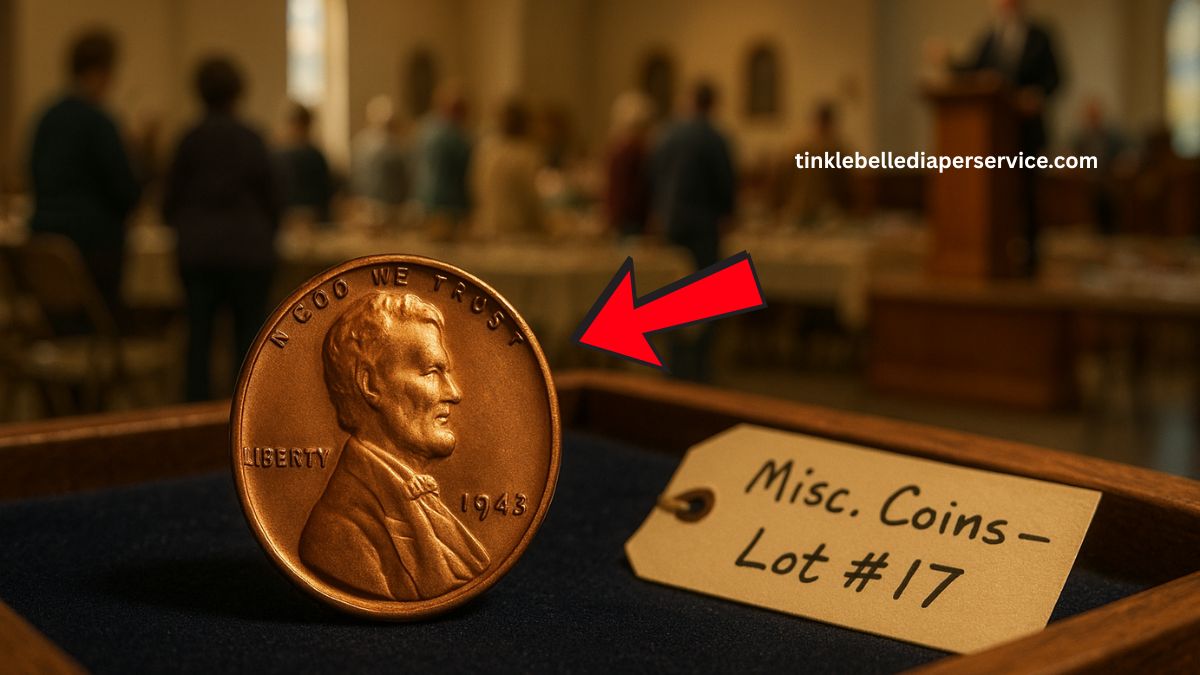In a remarkable turn of events, a rare 1943 Copper Lincoln Penny was uncovered during a modest church auction, astonishing attendees and collectors alike by being valued higher than the sum of all other items combined.
This extraordinary discovery underscores the immense worth that certain coins can hold, especially those with unique historical backgrounds.
The Historical Significance of the 1943 Copper Lincoln Penny
During World War II, the United States faced a critical shortage of copper, a metal essential for wartime production. To conserve this vital resource, the U.S. Mint transitioned from producing pennies with their traditional 95% copper composition to using zinc-coated steel in 1943.
However, due to a minting oversight, a limited number of pennies were mistakenly struck using leftover copper planchets from 1942.
These rare errors resulted in the creation of the 1943 Copper Lincoln Penny, making it one of the most sought-after coins among collectors .
Discovery at the Church Auction
At a recent church auction, an unsuspecting attendee purchased a box of miscellaneous items for a nominal fee. Upon closer examination, the buyer discovered a 1943 Copper Lincoln Penny nestled among the contents.
Recognizing its potential value, the coin was subsequently authenticated and appraised, revealing its worth to be significantly higher than the combined value of all other auctioned items.
Rarity and Value
The 1943 Copper Lincoln Penny is exceedingly rare, with estimates suggesting that only 10 to 20 such coins were ever produced. Their scarcity has led to staggering auction prices:ajc
- A specimen sold for $204,000 in 2019 .
- Another fetched $840,000 at auction in 2021 .
- The unique 1943-D Copper Penny, the only known example from the Denver Mint, was sold for $1.7 million in 2010 .
These figures highlight the coin’s immense value and the fervent interest it garners within the numismatic community.
Identifying a Genuine 1943 Copper Lincoln Penny
To determine the authenticity of a 1943 Copper Lincoln Penny, consider the following characteristics:
- Weight: Approximately 3.11 grams.
- Magnetism: Unlike the common 1943 steel penny, the copper variant is non-magnetic.
- Color: Exhibits a reddish-brown hue, distinguishing it from the silver-colored steel pennies.
- Mint Marks: May bear no mint mark (Philadelphia), an “S” (San Francisco), or a “D” (Denver).
Due to the prevalence of counterfeits, it’s imperative to have the coin authenticated by reputable grading services such as PCGS, NGC, or ANACS.
1943 Penny Variants
| Variant | Composition | Weight (grams) | Magnetism | Estimated Value |
|---|---|---|---|---|
| 1943 Steel Penny | Zinc-coated steel | 2.70 | Magnetic | $0.10 – $1.00 |
| 1943 Copper Penny | 95% copper, 5% tin/zinc | 3.11 | Non-magnetic | $200,000 – $1.7 million |
| 1943-D Copper Penny | 95% copper, 5% tin/zinc | 3.11 | Non-magnetic | $1.7 million (unique) |
The serendipitous discovery of a 1943 Copper Lincoln Penny at a church auction serves as a compelling reminder of the hidden treasures that may reside in everyday places.
This rare coin’s immense value is a testament to its historical significance and the enduring allure of numismatic collectibles.
For collectors and enthusiasts, it underscores the importance of vigilance and knowledge in the pursuit of rare and valuable coins.
FAQs
How can I verify if my 1943 penny is the rare copper version?
A genuine 1943 Copper Lincoln Penny will weigh approximately 3.11 grams, be non-magnetic, and exhibit a reddish-brown color. To confirm authenticity, consult a professional coin grading service.
Why were some 1943 pennies made of copper instead of steel?
The U.S. Mint intended to produce all 1943 pennies using zinc-coated steel to conserve copper for the war effort. However, a few leftover copper planchets from 1942 were inadvertently used, resulting in the rare copper variants.
What makes the 1943-D Copper Penny unique?
The 1943-D Copper Penny is the only known example minted in Denver using a copper planchet. Its singularity and provenance contribute to its exceptional value, with a recorded sale of $1.7 million.

